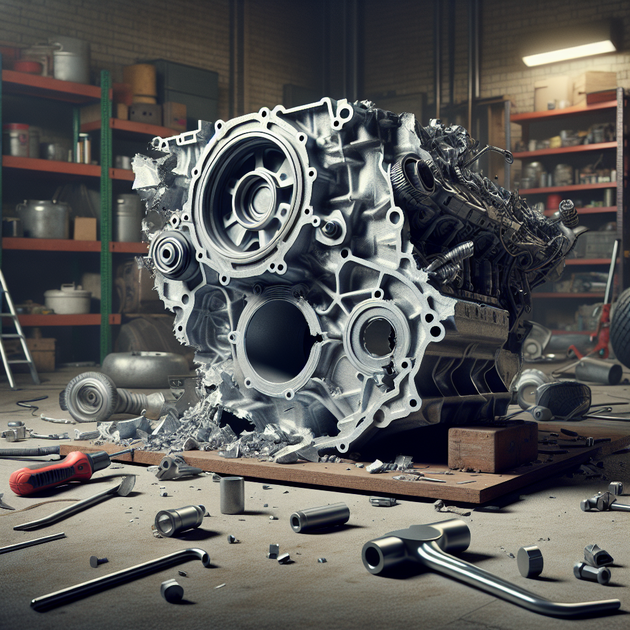Ever had that sinking feeling when you realize you’ve just done something major to your car—like making a hole in the engine block? It’s one of those moments that makes even experienced DIYers stop in their tracks and wonder if the car is now just expensive scrap metal.
How Does a Hole Happen—and What Does It Mean?
Punching a hole in the engine block isn’t common, but it can happen during tricky jobs like replacing a rear main seal or struggling with an axle. The engine block is basically the backbone of your motor; it holds all the important moving parts and keeps oil and coolant where they belong. When there’s a breach—a crack or actual hole—it can cause major oil leaks and even let coolant mix with oil (never good). For most cars, this is serious damage.
With a 2012 Toyota Camry, making a hole during an axle install isn’t unheard of if things slip or tools go flying. But once it happens, you’re faced with some tough choices about how much time and money to invest—or whether to walk away.
Is Repairing a Hole in an Engine Block Even Possible?
The short answer is… sometimes. But it depends on the size and location of the hole:
- Tiny cracks or pinholes can occasionally be fixed with special epoxy or welding—if they’re not near critical areas and don’t affect internal components.
- Larger holes (like from dropped tools or axle mishaps) almost always mean replacing the whole engine block or swapping out the entire motor assembly.
- Repair costs often add up fast—sometimes more than what an older car is worth.
In most cases with modern cars like your Camry, mechanics will recommend sourcing a used or rebuilt engine rather than attempting to fix a busted block. If you’re lucky enough to know someone who welds aluminum (and if the damage isn’t near moving parts), you might get by—but don’t count on it as a permanent solution.
So…Is My Car Scrap Now? Should I Part It Out?
This is probably the biggest question after putting a hole in an engine block. Here are your real-world options:
- Replace the Engine: This usually means swapping in a used motor from another Camry. It’s labor-intensive but gives your car new life if everything else is solid.
- Sell as-is for Parts: If fixing isn’t worth it (especially for an older model), selling parts off individually can bring more money than scrapping as one piece.
- Scrap It: Sometimes it’s better to cut losses and take whatever scrap yards will pay for metal weight and any reusable components.
- Donate or Trade: Some charities accept non-running cars (for tax write-offs), or dealers may offer trade-in credit—even for non-working vehicles.
Your Best Bet Depends on These Factors:
- The overall condition of your Camry (body/rust/interior/other mechanicals)
- Your budget (engine swaps cost thousands, even with used parts)
- Your DIY skill level (are you comfortable swapping engines yourself?)
- The demand for Camry parts in your area
An Honest Story from Underneath the Car
A friend once tried fixing up his old sedan after punching through part of the transmission case while replacing CV axles. He was devastated—thought he’d ruined everything. Turns out, once he weighed his options (and checked prices at salvage yards), selling off good doors and electronics brought him more than he expected! Meanwhile, another buddy managed an affordable used-engine swap on his Corolla by hunting down deals online and doing much of the work himself. Both stories show there’s rarely just one “right” answer; it all comes down to time, money, and how attached you are to your ride.
The Bottom Line: Think Before You Junk Your Car
Punching a hole in an engine block feels like game over—but it doesn’t have to be. Weigh repair costs against what similar cars sell for running—or parted out. Sometimes walking away makes sense; other times, giving new life with an engine swap could be worth it if your Camry is otherwise solid.
Have you ever faced this kind of automotive disaster? What did you decide—and would you do anything differently next time?

Leave a Reply